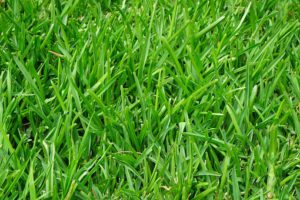Which St Augustine Grass is Best for Florida

St. Augustine grass is a warm-season turf that is popular throughout the state of Florida, the Caribbean, and the Mediterranean, this turf adapts to a wide variety of soil types. When properly maintained St. Augustine grass produces a nice dense green turf that is very beautiful, if you’re living in a coastal area this grass type is the best choice because of its ability to withstand salt sprays.
We will be taking a closer look at the best type of St. Augustine grass for Florida including the advantages and the disadvantages of this popular turf species.
The Best Type of St. Augustine Grass For Florida
Floratam: Floratam is one of the most popular among homeowners, this grass type loves lots of sunlight, is drought resistant, and can adapt well to a wide range of soil. Floratam is a coarse grass with broad, flat blades. When well maintained during the summer months, Floratam forms a deep green to bluish-green color, but once this grass goes dormant during the cooler months the color will begin to fade. The ideal heights for Floratam are 3 to 4 inches.
Bitter-Blue: Bitter blue turf is a greenish-blueish turfgrass that has a dense and fine texture, with a moderate cold tolerance and a slow growth rate. This grass type is also shade tolerant. One key to growing healthy bitter-blue is to water the lawn only when the grass show sign of moisture stress. The proper cutting height for bitter blue is 3.5-4 inches. Bitter-blue is well-adapted and can be used throughout the United States.
Palmetto: Palmetto St Augustine grass has a medium texture and a deep green color, this turf type has a superb tolerance to the cold and does well when planted in the full sun to partial shade. What I found to be great about palmetto grass is its’ resistance to chinch bugs and thatch buildup, the proper cutting height is 1.5-2.5 inches. Never remove more than 1/3 of the grass leaf blade.
Floralawn: Floralawn thrives best in environments that are mild, its ability to stand up to cold weather as well as shaded areas is poor, this grassturf should be cut at 2-3 inches in height.
Seville: Serville is a hardy turf that can withstand drought conditions as well as tolerate shaded areas, this grass type can the salt making it a great choice for coastal areas. Serville tends to be prone to thatch and is cold-sensitive. The cutting height for Serville should be 2-2.5 inches.
Sapphire: Sapphire makes the ideal grass for warm climate areas, this turfgrass has a fine texture that’s soft and produces a unique blue-green color. Sapphire does not need to be fertilized regularly or often, can withstand drought conditions, and areas that are shaded, and makes a great turf for coastal areas withstanding the salt. Sapphire recovers well from wear. During the summer months, Sapphire requires mowing every 5-10 days and every 3-6 weeks during the winter months. The ideal height to cut Sapphire is 2-5cm in areas that are sunny and 5-7 cm in shaded areas.
Delta Shade: Delta shade is a great shade-tolerant turf but not as good as the dwarf varieties, delta shade tends to produce a lighter green color than some cultivars. The proper cutting height for the Delta Shade is 3.5-4 inches.
Delmar: Delmar St. Augustine grass is a vigorous dark emerald green grass turf that has a coarse medium texture, this dwarf grass does well in the sun, and has good shade tolerant but has the tendency to develop thatch. The ideal mowing height for Delmar is 2 to 2.5 inches.
In case you missed it
- How to Service a Gas-Powered Lawn Mower
- How to Sharpen a Lawn Mower Blade
- How to Revive St. Augustine Grass
- St. Augustine Grass Maintenance Schedule
- The Best Edger for St Augustine Grass
- The Best Weed Wackers for St. Augustine Grass
- The Best lawn Mowers for St. Augustine Grass
The Final word on the best type of St. Augustine grass for Florida
St. Augustine grass is a great turf that looks amazing when well taken care of, I have worked with this grass type on many garden projects. St. Augustine grass is a great performer that will go to work for you. I have proven this grass type so if you have not as yet give this turf type a try, you will be so happy with the results.
About the author
Norman loves being in the garden, both at home and for his job....
he is 'Natures Little helper' being outdoors, growing his vegetables and flowers from an early age.
Now having spent over 22 years in the profession he want to give some of his knowledge to others...
his vast array of hints and tips you will find scattered over this site will help you no end growing plants in your garden.
